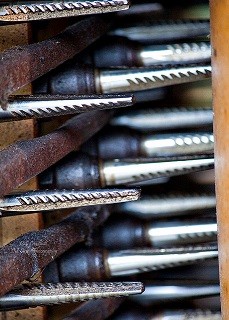-
Metalo apdirbimo
-
Tekstilės
-
Maisto
-
Baldų
-
Plastiko
-
Spaustuvių
-
Energetikos alyvos
-
Elektrinės
-
Chemijos
-
Geležinkelių
-
Dujų
-
Naftos
-
Laivybos
-
Elektronikos
-
Trikotažo mezgimo
-
Cemento
-
Popieriaus
-
Farmacijos
-
Stiklo
-
Vandentvarkos tepalai
-
Konstruktyvo
-
Statyba
-
Žemės ūkis
-
Kelių tiesimo
-
Gręžiniai, gavyba
-
Medienos
-
Pakuotės
-
Grūdų perdirbimo
-
Kuro
-
Metalų apdirbimo
-
Guoliams
-
Įvorėms
-
Grandinėms
-
Pavaroms
-
Dantračiams
-
Trosams
-
Sriegiams
-
Kreipiančiosioms
-
Elektros varikliams
-
Movoms
-
Konvejeriams
-
Prietaisams
-
Turbinoms
-
Transformatoriams
-
Staklėms
-
Hidraulikai
-
Pneumo sistemai
-
Šaldytuvams
-
Oro kompresoriams
-
Vakuuminiams siurbliams
-
Šilumokaičiams
-
Suvirimo aparatams
-
Formoms
-
Klojiniams
-
Metalo apdirbimui
-
Linijiniams kreipikliams
-
Pjūklams
-
Vandens siurbliams
-
Gofruotuvams
-
Granuliatoriams
-
Plastikui
-
Vožtuvams
-
Robotams
-
Centrifugoms
-
Laboratorinė įranga
-
Difuziniai siurbliai
-
Sklendėms
-
Siurbliams
-
Orapūtėms
-
Tekstilės adatoms
-
Sandarinimo žiedai
-
Deguonies įrangai
-
Kabelių pratraukimui
-
Gumai
-
Spyruoklėms
-
Centrinės tepimo sistemos
-
Mezgimo mašinoms
-
Platinoms ir kabliukams
-
Verptuvams
-
Žarniniams siurbliams
-
Staklių sūkliams
-
Juostiniams pjūklams
-
Galandimui
-
CNC tepalai
-
Elektros kontaktams
-
Tarpinėms
-
 Aliuminiui
Aliuminiui
© 2021 UAB "Mechanica"
© 2021 UAB "Mechanica"
- Tepimo sprendimai pramonei
- Žemės ūkis
- Rinktuvų špindelių ir ašių tepalas
Rinktuvų špindelių ir ašių tepalas
Centrinių tepimo sistemų tepalas
Pirmieji rinkėjai vienu metu galėjo nuimti tik vieną medvilnės eilę, bet vis tiek galėjo pakeisti iki keturiasdešimties rankininkų. Dabartinis medvilnės rinktuvas yra savaeigė mašina, kuri vienu metu pašalina medvilnės pūkelius ir sėklas (sėklą-medvilnę) iš augalo iki šešių eilių.
NLGI 00 takus centrinės sistemos tepalas
Šiandien naudojami dviejų tipų rinktuvai. Vienas iš jų yra "stripper" rinktuvas, daugiausia naudojamas Teksase. Jų taip pat galima rasti Arkanzase. Jis pašalina ne tik pūkelius nuo augalo, bet ir nemažą dalį augalinių medžiagų (pvz., neatidarytus gumbelius). Vėliau augalinės medžiagos atskiriamos nuo pūkelių numetant sunkesnę medžiagą, kol pūkai patenka į krepšį rinktuvo gale. Kitas rinktuvo tipas yra "verpstinis" rinktuvas. Jame naudojamos spygliuotų verpsčių eilės, kurios sukasi dideliu greičiu ir pašalina iš augalo sėklinę medvilnę. Tada medvilnės sėklos nuimamos nuo verpsčių priešinga kryptimi besisukančiu sklende ir supučiamos į krepšį. Kai krepšys prisipildo, rinktuvas išmeta sėklinę medvilnę į „modulių kūrimo įrenginį“. Modulio kūrėjas sukuria kompaktišką „plytą“ iš sėklinės medvilnės, sveriančią maždaug 21 000 svarų (16 nevalytų ryšulių), kurią galima laikyti lauke arba „džino kieme“, kol bus nuvalyta. Kiekvienas išvalytas rulonas sveria maždaug 480 svarų (218,2 kg).
Centrinio tepimo Biologinis tepalas
Centralizuota tepimo sistema tam tikrais atvejais suteikia guoliams nuolatinį tepalo tiekimą intervalais, ir tai daro, kai mašina veikia ir visi guoliai juda. Automatinis centrinis tepimas :
- pagerina technikos prieinamumą!
- bent keturis kartus padidina guolio tarnavimo laiką!
- rastiškai sumažina priežiūros ir remonto išlaidas!
- sumažina brangų technikos ir personalo prastovos laiką!
- sutaupo net 40 % tepalo!
- saugo aplinką
| Rūšis | Darbinės temperatūros, ºC | Lašėjimo temperatūra, ºC | Pagrindas | Panaudojimas, savybės |
|
Molylub Agro Iberfarm 20 |
-25 iki +120 |
170 |
Min/ Li Hdxst |
NLGI 00 konsistencijos agro sistemų tepalasPusiau skystas tepalas žemės ūkio technikos centrinėms tepimo sistemos, sutepant ašis, spyruoklines įvores, jungčių kaiščius, stabdžių kumštelinių diskų guolius ir kitus agregatus. Ypač Linų, medvilnės apdirbimo įrengimų špindelių, įvorių tepimui. Žalias. |
Ekologiški biologiškai skilūs tepalai agro technikai
Conventional picker grease
Case IH Module Express 625 picks cotton and simultaneously builds cotton modules.
The first pickers were only capable of harvesting one row of cotton at a time, but were still able to replace up to forty hand laborers. The current cotton picker is a self-propelled machine that removes cotton lint and seed (seed-cotton) from the plant at up to six rows at a time.
There are two types of pickers in use today. One is the "stripper" picker, primarily found in use in Texas. They are also found in Arkansas. It removes not only the lint from the plant, but a fair deal of the plant matter as well (such as unopened bolls). Later, the plant matter is separated from the lint through a process dropping heavier matter before the lint makes it to the basket at the rear of the picker. The other type of picker is the "spindle" picker. It uses rows of barbed spindles that rotate at high speed and remove the seed-cotton from the plant. The seed-cotton is then removed from the spindles by a counter-rotating doffer and is then blown up into the basket. Once the basket is full the picker dumps the seed-cotton into a "module builder". The module builder creates a compact "brick" of seed-cotton, weighing in at approximately 21,000 lb (16 un-ginned bales), which can be stored in the field or in the "gin yard" until it is ginned. Each ginned bale weighs roughly 480 lb (218.2 kg).
In c.2008 the Case IH Module Express 625 was designed in collaboration with ginners and growers to provide a cotton picker with the ability to build modules while harvesting the crop.[1] An industry-exclusive on-board round module builder was offered by John Deere in 2007





















